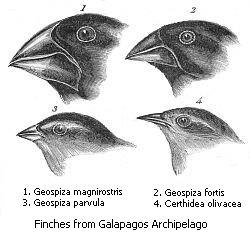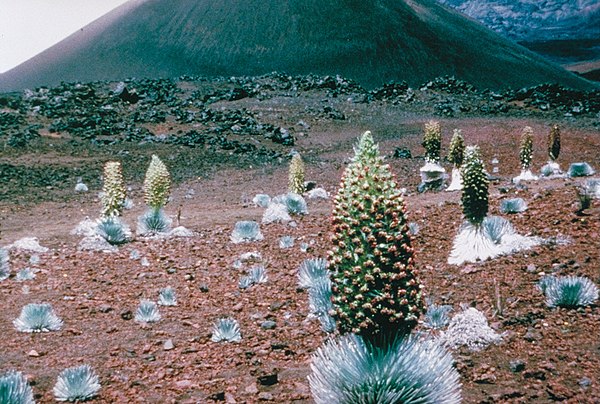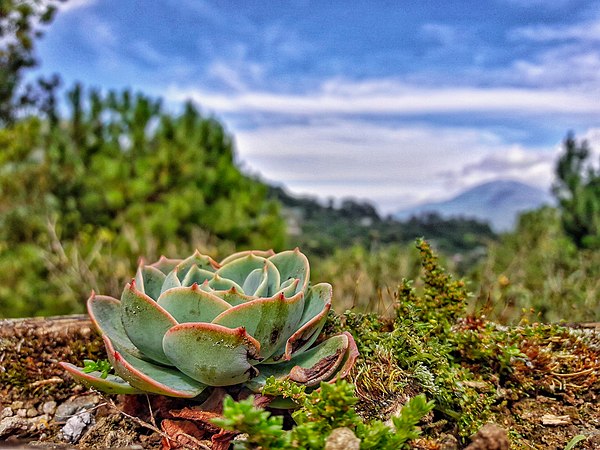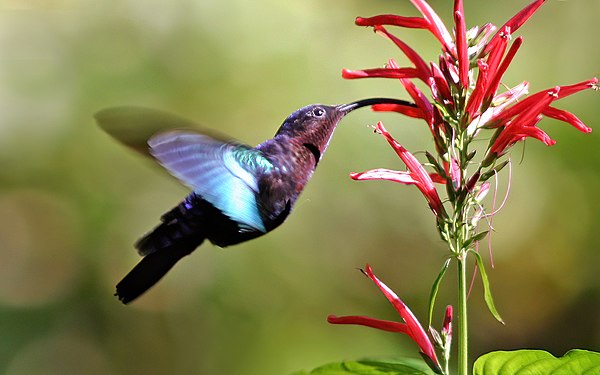Adaptive radiation
Videos
Page
In evolutionary biology, adaptive radiation is a process in which organisms diversify rapidly from an ancestral species into a multitude of new forms, particularly when a change in the environment makes new resources available, alters biotic interactions or opens new environmental niches. Starting with a single ancestor, this process results in the speciation and phenotypic adaptation of an array of species exhibiting different morphological and physiological traits. The prototypical example of adaptive radiation is finch speciation on the Galapagos, but examples are known from around the world.

Four of the 14 finch species found in the Galápagos Archipelago, which are thought to have evolved via an adaptive radiation that diversified their beak shapes, enabling them to exploit different food sources.

An ʻiʻiwi (Drepanis coccinea). Note the long, curved beak for sipping nectar from tubular flowers.

A mixture of blooming and non-blooming Haleakalā silverswords (Argyroxiphium sandwicense macrocephalum).
Ecological niche
Videos
Page
In ecology, a niche is the match of a species to a specific environmental condition. It describes how an organism or population responds to the distribution of resources and competitors and how it in turn alters those same factors. "The type and number of variables comprising the dimensions of an environmental niche vary from one species to another [and] the relative importance of particular environmental variables for a species may vary according to the geographic and biotic contexts".

The flightless dung beetle occupies an ecological niche: exploiting animal droppings as a food source.

The Grinnellian niche can be described as the "needs" niche, or an area that meets the environmental requirements for an organism's survival. Most succulents are native in dry, arid regions like deserts and require large quantities of sun exposure.

Beaver dam in Hesse, Germany. By exploiting the resource of available wood, beavers are affecting biotic conditions for other species that live within their habitat.

The shape of the bill of this purple-throated carib is complementary to the shape of the flower and coevolved with it, enabling it to exploit the nectar as a resource.